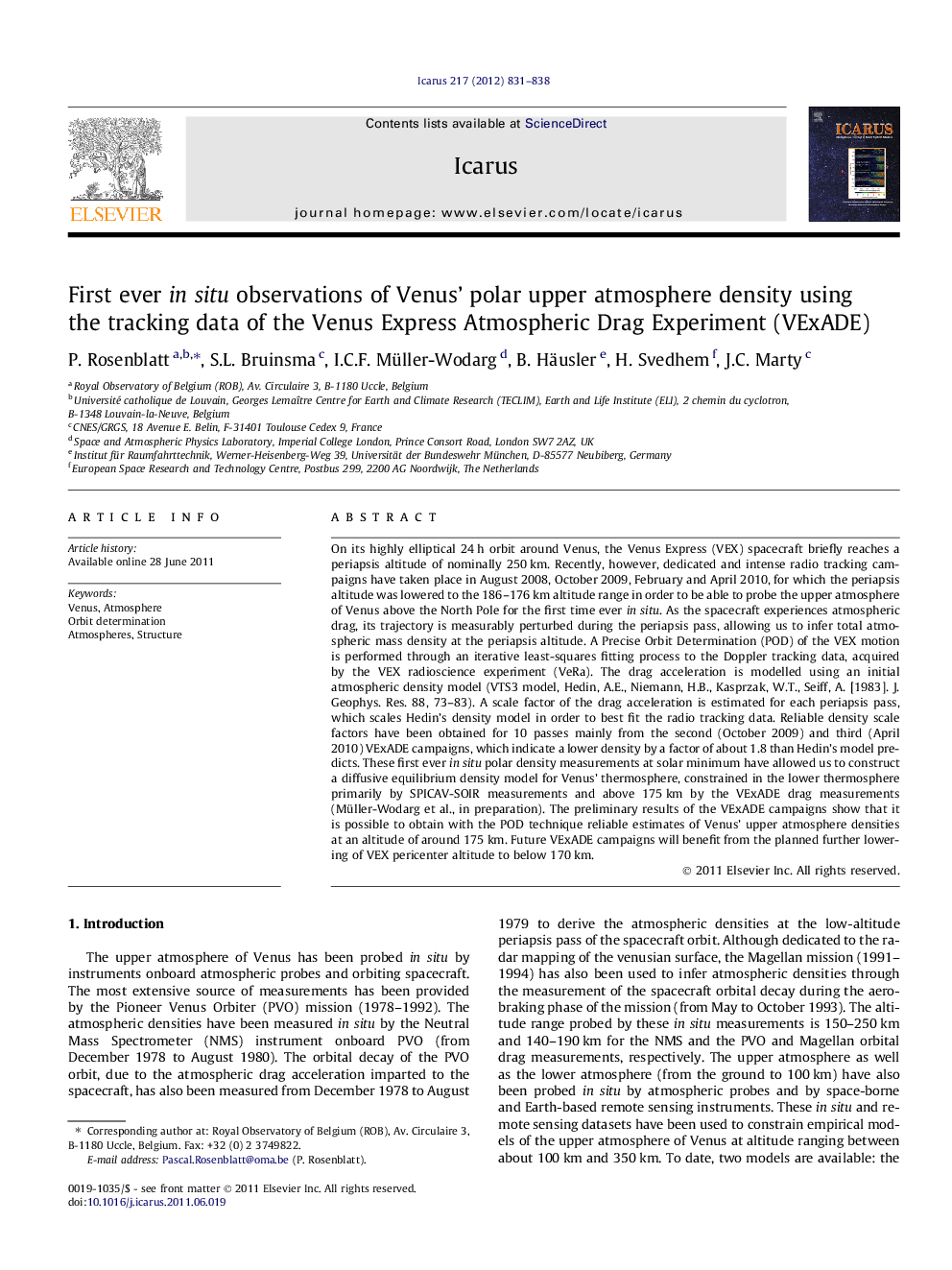| کد مقاله | کد نشریه | سال انتشار | مقاله انگلیسی | نسخه تمام متن |
|---|---|---|---|---|
| 1773704 | 1021143 | 2012 | 8 صفحه PDF | دانلود رایگان |

On its highly elliptical 24 h orbit around Venus, the Venus Express (VEX) spacecraft briefly reaches a periapsis altitude of nominally 250 km. Recently, however, dedicated and intense radio tracking campaigns have taken place in August 2008, October 2009, February and April 2010, for which the periapsis altitude was lowered to the 186–176 km altitude range in order to be able to probe the upper atmosphere of Venus above the North Pole for the first time ever in situ. As the spacecraft experiences atmospheric drag, its trajectory is measurably perturbed during the periapsis pass, allowing us to infer total atmospheric mass density at the periapsis altitude. A Precise Orbit Determination (POD) of the VEX motion is performed through an iterative least-squares fitting process to the Doppler tracking data, acquired by the VEX radioscience experiment (VeRa). The drag acceleration is modelled using an initial atmospheric density model (VTS3 model, Hedin, A.E., Niemann, H.B., Kasprzak, W.T., Seiff, A. [1983]. J. Geophys. Res. 88, 73–83). A scale factor of the drag acceleration is estimated for each periapsis pass, which scales Hedin’s density model in order to best fit the radio tracking data. Reliable density scale factors have been obtained for 10 passes mainly from the second (October 2009) and third (April 2010) VExADE campaigns, which indicate a lower density by a factor of about 1.8 than Hedin’s model predicts. These first ever in situ polar density measurements at solar minimum have allowed us to construct a diffusive equilibrium density model for Venus’ thermosphere, constrained in the lower thermosphere primarily by SPICAV-SOIR measurements and above 175 km by the VExADE drag measurements (Müller-Wodarg et al., in preparation). The preliminary results of the VExADE campaigns show that it is possible to obtain with the POD technique reliable estimates of Venus’ upper atmosphere densities at an altitude of around 175 km. Future VExADE campaigns will benefit from the planned further lowering of VEX pericenter altitude to below 170 km.
► Venus’ polar thermosphere densities are derived from the Venus Express spacecraft tracking data.
► These data permit to reconstruct the drag-induced orbital perturbations of the spacecraft.
► The density of the polar thermosphere is about two times less than expected from previous models.
► These new measured densities show a polar collapse of the thermosphere structure.
► It is due to a collapse of the basis of the thermosphere or to a thermosphere colder than expected.
Journal: Icarus - Volume 217, Issue 2, February 2012, Pages 831–838